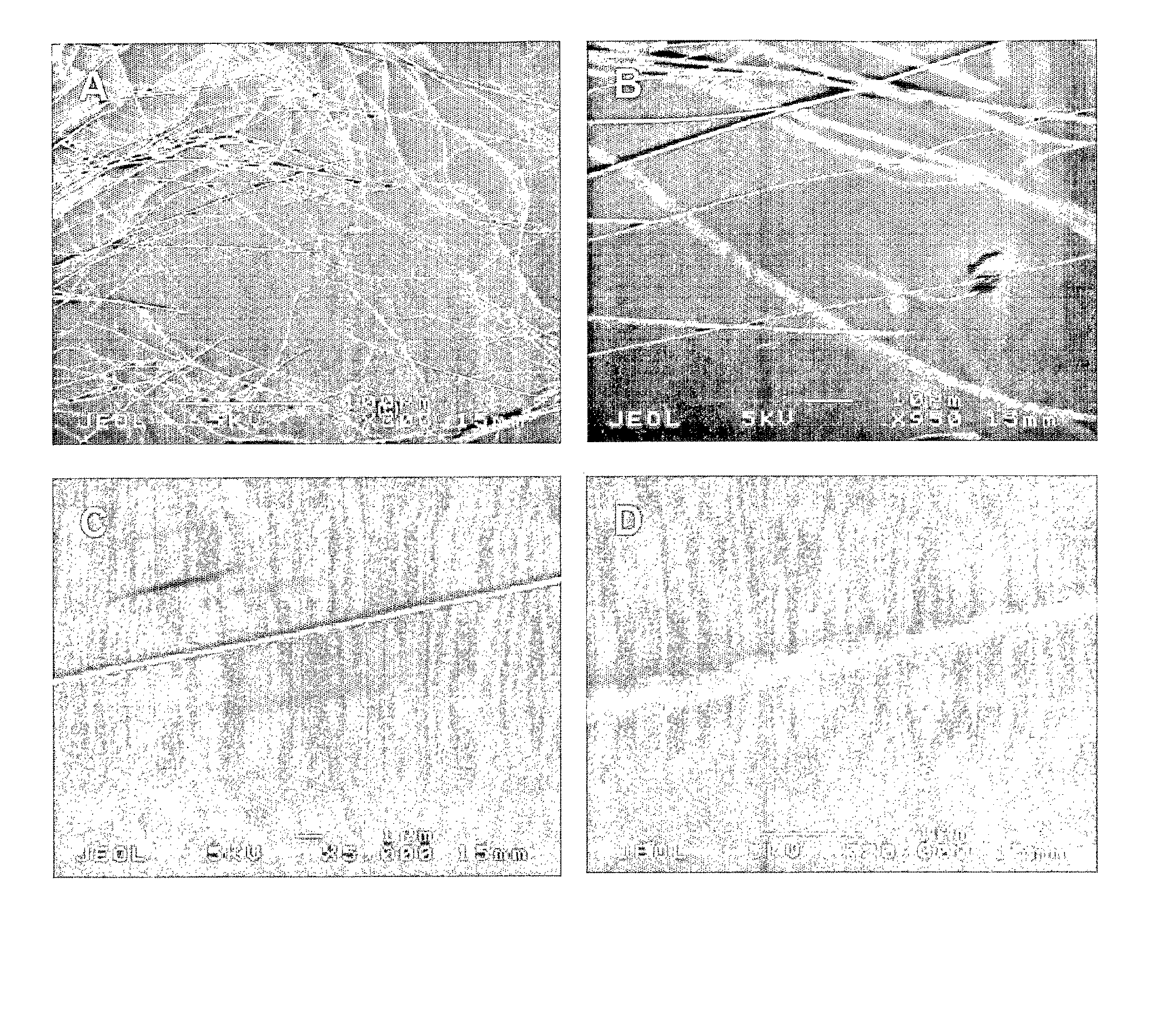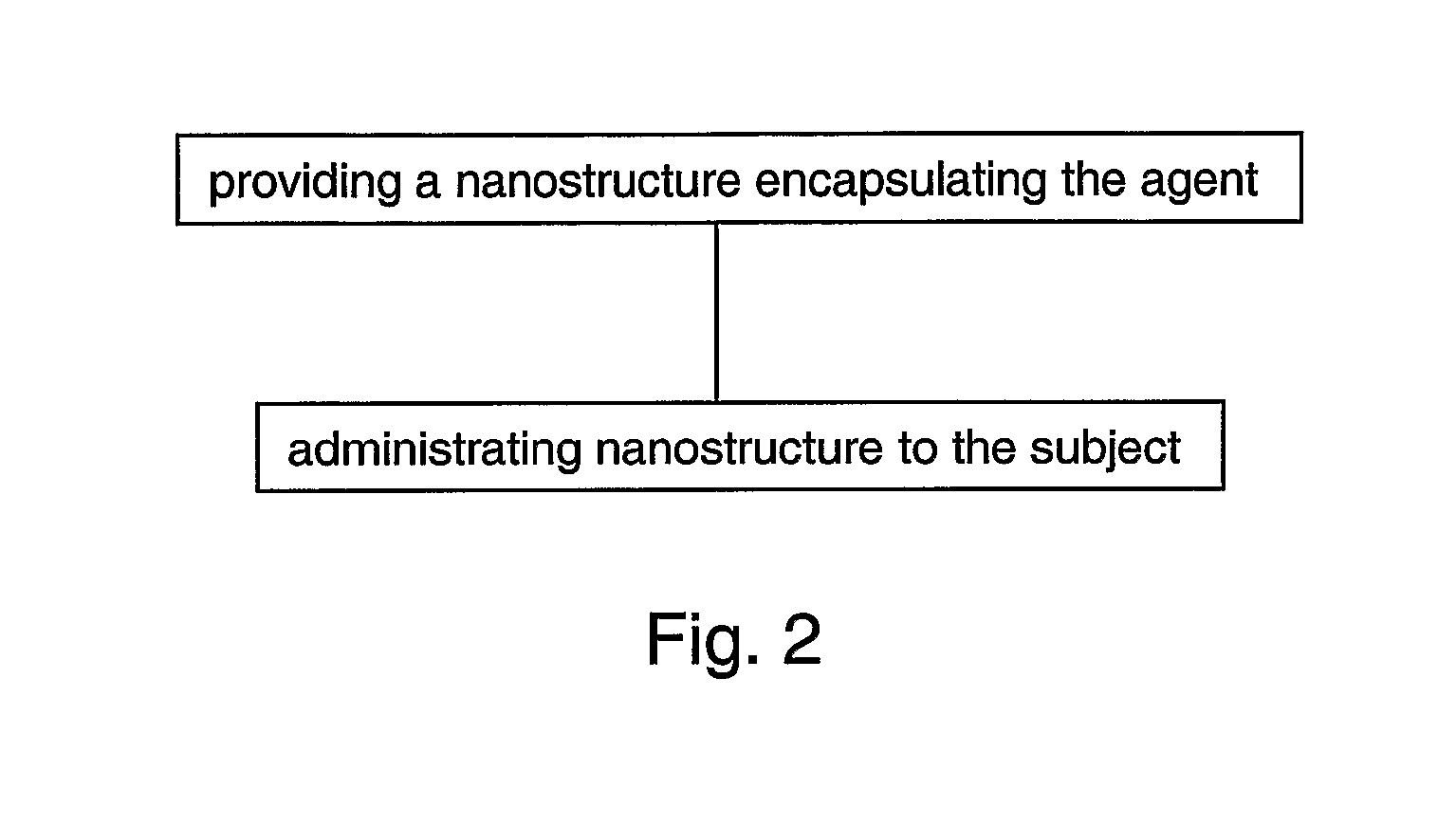Peptide Nanostructures Containing End-Capping Modified Peptides And Methods Of Generating And Using The Same
a technology of end-capacity modification and nanostructure, which is applied in the direction of peptide/protein ingredients, solution crystallization, spectral modifiers, etc., can solve the problems of large structural limitations of carbon nanotubes produced to date, unpredictable spatial structure, electronic, molecular and structural properties,
- Summary
- Abstract
- Description
- Claims
- Application Information
AI Technical Summary
Benefits of technology
Problems solved by technology
Method used
Image
Examples
example 1
Self-Assembly of Peptide Nanotubes and Amyloid like Structures by Charged-Termini Capped Diphenylalanine Peptide Analogues
[0552] The ability to form nanostructures from various modified peptides with emphasis on the charged state of their termini was examined.
[0553] Materials and Experimental Procedures:
[0554] Materials—End capping modified diphenylalanine peptides, presented in Table 3 hereinbelow, were purchase from Bachem (Bubendorf, Switzerland). Fresh stock solutions of the peptides were prepared by dissolving the lyophilized form of the peptides in 1,1,1,3,3,3-hexafluoro-2-propanol (HFIP, Sigma) at a concentration of 100 mg / ml. To avoid any pre-aggregation, fresh stock solutions were prepared for each experiment. The cyclo-Phe-Phe peptide (Peptide 8) was dissolved in HFIP to a concentration of 25 mg / ml and was subjected to ultrasound until a clear solution was obtained. The peptides stock solutions were diluted into a final concentration of 2 mg / ml in ddH2O. The NH2-Phe-Phe...
PUM
| Property | Measurement | Unit |
|---|---|---|
| length | aaaaa | aaaaa |
| length | aaaaa | aaaaa |
| diameter | aaaaa | aaaaa |
Abstract
Description
Claims
Application Information
 Login to View More
Login to View More - R&D
- Intellectual Property
- Life Sciences
- Materials
- Tech Scout
- Unparalleled Data Quality
- Higher Quality Content
- 60% Fewer Hallucinations
Browse by: Latest US Patents, China's latest patents, Technical Efficacy Thesaurus, Application Domain, Technology Topic, Popular Technical Reports.
© 2025 PatSnap. All rights reserved.Legal|Privacy policy|Modern Slavery Act Transparency Statement|Sitemap|About US| Contact US: help@patsnap.com



